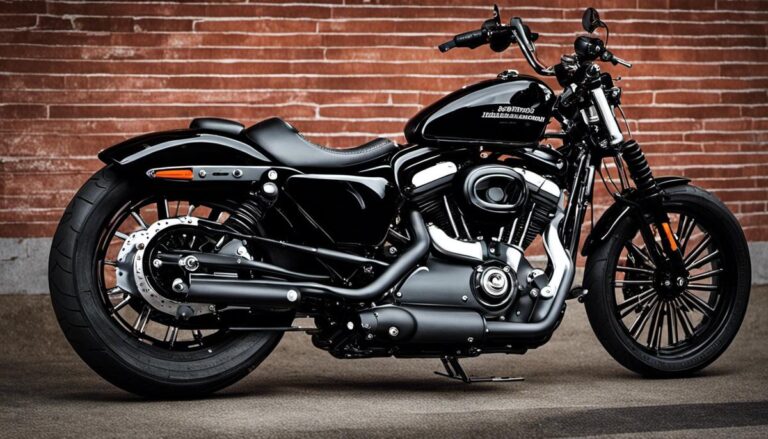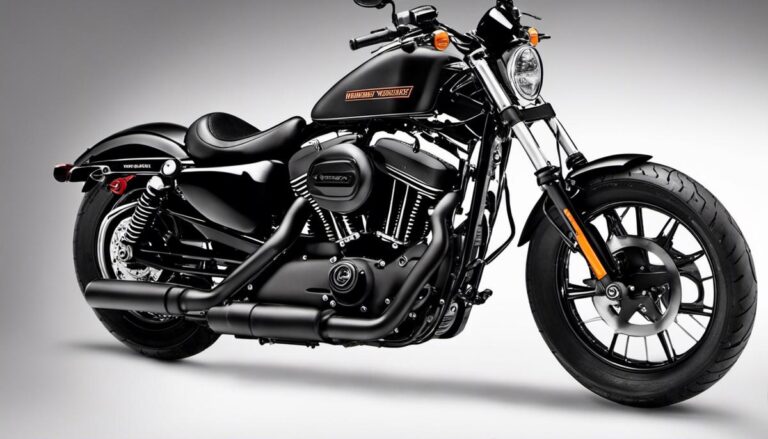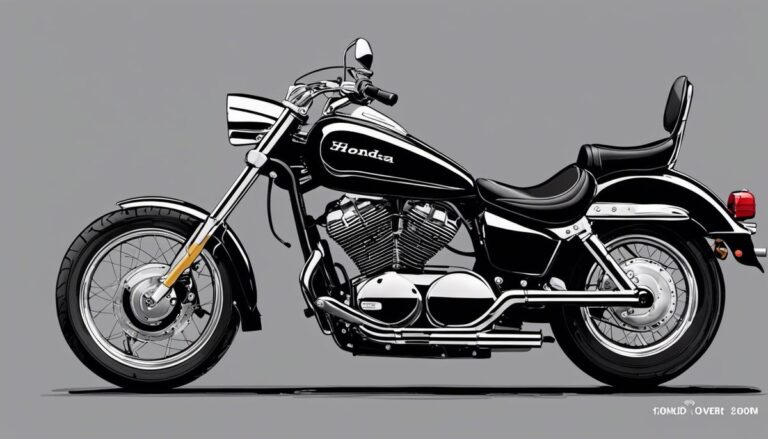Kawasaki Ninja ZX-6R: Evolution Over the Years
Enthralling millions of motorcycle enthusiasts globally, the Kawasaki Ninja ZX-6R boasts a unique blend of trailblazing technology, raw power, and remarkable aesthetics. Representing a quintessential chapter in the anthology of motorcycle engineering, the inception and evolution of this iconic machine have been marked by a series of impressive innovations and bold tweaks, reflecting Kawasaki’s relentless pursuit of perfection. Charting its initial emergence, design enhancements, and notable distinctions in its 600/636 models, this narrative ventures deep into the ZX-6R’s prodigious journey. Interspersed with firsthand accounts of rider experiences and forward-thinking speculation regarding its future trajectory, this examination transcends the confines of a standard review, providing an in-depth exploration of a two-wheeled marvel that converges speed, comfort, and reliability.
Origins of Kawasaki Ninja ZX-6R
Welcome, fellow motor aficionados! Let’s delve into a journey steeped in heritage, and twisting throttles, and crack the throttle wide open into the dynamic and adrenaline-fueled birth story of the legendary Kawasaki Ninja ZX-6R. From humble beginnings, the Kawasaki Ninja ZX-6R has risen to the top, leaving a deafening roar in its wake, setting a new standard for middleweight sportbikes globally.
Launched in 1995, the Kawasaki Ninja ZX-6R signified the debut of one of the first blue-blooded mid-size sportsbikes in the world. Born in Japan at the heart of Kawasaki Heavy Industries, the Ninja ZX-6R was a product of advanced Japanese engineering and out-of-the-box thinking.
To truly break down the roots of the Kawasaki Ninja ZX-6R, we have to rewind the clock, way back to its older sibling – the ZX-6. It was no secret that Kawasaki needed something stellar, something extraordinary that could hold up against the intense competition in the market. With rivals such as Honda’s CBR600F and Yamaha’s YZF600R thundering down, it was prime time to up the ante.
That’s where the Ninja name came into play. A pedigree that signaled speed, agility, and power much like the shadowy figures of ancient Japanese history. The Ninja series had already established its reputation as a tempestuous powerhouse. Extending this lineage to tap into the middleweight sportsbike sphere was only natural. The result? The ZX-6R, an intensely potent 600cc machine that successfully combined power, handling, and versatility.
The original Ninja ZX-6R made its grand entrance with a 599cc inline-four engine, capable of producing a roaring 100 horsepower. Its exceptional handling, quick acceleration, and overall striking presence had enthusiasts wide-eyed and exhilarated. The original ZX-6R was an immediate game-changer, breaking barriers and setting new expectations for performance and design.
Since then, the Ninja ZX-6R has evolved significantly, continuously adapting to match the pulse of the sportsbike market. It refined its inline-four-engine, enhancing its top-speed and handling stability. It received significant changes in 2003, moving up to a 636cc engine and acquiring a more modern and edgy look, complete with radical bodywork that was both functional and visually stunning. Again in 2009, the ZX-6R saw a significant reduction in weight, resulting in improved acceleration and maneuverability.
Fast forward to 2021. The Kawasaki Ninja ZX-6R has transcended the motorcycle landscape over the years, with its powerful 636cc engine, advanced electronics and sharp aesthetics that command attention on and off the track. With the objective of all-around domination, the ZX-6R continues to champion the blend of street-riding viability and track-day capability.
To conclude, the birth story of the Ninja ZX-6R is, in essence, a testament to Kawasaki’s unwavering commitment to pushing boundaries and setting benchmarks. The Kawasaki Ninja ZX-6R has carved its niche, snaking its way through the competition – a beacon of performance, design, and immersive riding experience that resonates with a roar that can be heard around the globe. Strapping a leg over the Ninja ZX-6R evokes a sense of power and control that only gets mightier from the first twist of the throttle. It’s not just a sportsbike; it’s an embodiment of unrelenting power and exhilarating speed – a feeling that every moto enthusiast lives for.
Get ready to rev that engine, because the saga continues. For the Kawasaki Ninja ZX-6R, the road never ends—it only gets more exciting. Ride on, fellow enthusiasts, ride on!

Evolution and Improvements Over the Years
The ZX-6R, almost a synonym for Kawasaki’s passion and dedication to delivering exceptional motorcycles, does not cease to impress. There’s certainly more to delve into concerning this thrilling machine. Strap in as we explore more of its evolution.
While the Ninja name has been cemented as a symbol of opportunity and strength, the model ZX-6R played a major role in elevating this. As a beacon of Kawasaki’s racing heritage, the ZX-6R first hit the tarmac back in 1995. Over the years, it morphed from a robust, reliable machine into a track-focused, well-refined motor beast.
One might wonder how this transition occurred in this journey. First, a key aspect of the ZX-6R’s evolution revolved around the alterations in the engine displacement. Initially born with a 599cc engine, the model saw a shift to 636cc in 2002. This move was not just for more power, but also for improved rideability and better mid-range response. However, in 2007, the displacement went back to 599cc to comply with racing regulations before again returning to 636cc in 2013, only to saga that persists to date.
Changes weren’t confined to the engine displacement; the ZX-6R’s aesthetics were continuously updated too. It followed the industry trend of evolving into a more aggressive, streamlined look. In 2009, a significant redesign made it more of a predator on roads and tracks, with a low center of gravity and a focused riding position. The modern iteration of the ZX-6R bears a lot of resemblance to the original design ethos, but with a blend of the contemporary technology and aesthetic sense.
Suspension enhancements need a mention as well. Oil-damped forks gave way to gas cartridges in 2003, and fully adjustable Showa BPF (Big Piston Front) forks were introduced in 2009. The quest for high-performance handling never ceased, with the introduction of the Showa SFF-BP (Separate Function Fork – Big Piston) in the 2019 model, providing exceptional damping force and contributing to a lighter, more responsive ride.
Packed with top-notch electronics over the years, the ZX-6R has come to embrace the digital age admirably. What started with the Digital Ignition in 1998, evolved into the highly capable and customizable Kawasaki Traction Control and Kawasaki Intelligent anti-lock Brake System, ensuring a blend of safety and performance.
Finally, the ZX-6R’s progression isn’t just about developing the bike. It’s about the influence it has had on a whole generation of sport-bike enthusiasts. Whether it is riding hard on a track, or just cruising on a weekend, the versatility, technology, and stunning aesthetics that have evolved over time with the ZX-6R have come to define what we all love about Kawasaki motorcycles.
The evolution of the Kawasaki Ninja ZX-6R serves as a testament to Kawasaki’s philosophy of improvement and innovation. So, whether you’re a newcomer into the Ninja family, or have a long history, keep revving and allow the ZX-6R’s evolution to enthral your next ride.

Highlights of the 600/636 Models
Delving into the Marvels of the Kawasaki Ninja ZX-6R: The 600/636 Models
Beyond the speed and performance that leave an adrenaline rush in their wake, the Kawasaki Ninja ZX-6R series has always represented a remarkable lesson in continual improvement and adaptation to the circuitous environment of motorcycle manufacturing. Our focus today shall be on the fascinating facets of the 600 and 636 models of the ZX-6R.
A remarkable episode in the story of the Ninja ZX-6R unveils when Kawasaki decided to upgrade the revered 600 model to displacements of 636cc. This strategic displacement bump offered that extra edge, furnishing riders with an increased mid-range that effortlessly propels the rider forward, making even the most extreme lean angles easily achievable.
Supercharging the immersive riding experience further are the ergonomics of these outstanding models. The ZX-6R impeccably balances between comfort and sportiness. The adjustable seat and clip-on handlebars offer optimum control, while the compact, sleek panels gel with the overall aesthetics, morphing into a symphony of form and function.
The track-inspired suspension setup in the ZX-6R has been remarked upon favorably. Span-adjustable Showa Separate Function Big Piston Forks (SFF-BP) and a fully adjustable Uni-Trak mono-shock in the rear, associated with a swift, responsive braking system, have contributed to the racetrack dominance of these models.
With the 600 and 636, advancements in technology were also brought to light. An Inertial Measurement Unit (IMU), advanced Kawasaki Traction Control (KTRC), and selectable engine brake control enriched the riding experience, granting a safe and controlled ride coupled with power and speed. These bikes house an extensive suite of electronics, including ABS and a quick shifter, further amplifying their performance prowess.
Within the Kawasaki community, the ZX-6R, especially the 600 and 636 models, are admired and celebrated, fostering widespread appeal among sport-bike enthusiasts. Their performance, aesthetics and continual evolution serve as a testament to Kawasaki’s commitment to satiate the speed-craving, thrill-seeking, power-loving rider. They illuminate the path to broader horizons in the world of sport motorcycles.
As one delves deeper into the Kawasaki Ninja ZX-6R 600/636 models, their charm unfolds in amalgamations of power, style, and revolutionary innovation. It becomes clear that Kawasaki’s philosophy has always been about exceeding limits and setting new standards, with the ZX-6R standing as a bold embodiment of their inventive spirit. As air cuts through the engine’s roar and rubber meets the road, it’s a reminder that the journey has, in many ways, only just begun.

Real World Experiences and User Feedback
Building on the extensive backstory and relentless evolution of the Kawasaki Ninja ZX-6R, it’s time to shift gears and delve into the gripping real-world experiences of those who have tamed this beast! Riders’ first-hand feedback often offers invaluable insight into the ZX-6R that numbers and specs sheets simply can’t capture.
Unsurprisingly, the most common sentiment shared among ZX-6R riders is a deep sense of appreciation for its formidable power delivery. The beefy 636cc engine doesn’t just translate into high-speed thrills, but also garners praise for its efficient low and mid-range torque. Whether that’s cruising down the highway or maneuvering tricky city streets, the ZX-6R’s power characteristics paint a picture of versatility and accessibility.
Several riders swear by the superior handling offered by the ZX-6R. They mark the bike’s ability to remain rock-stable at high speeds as well as its absolute compliance during cornering maneuvers. The secret sauce, in this case, seems to be found in the meticulously calibrated suspension setup. Additionally, Kawasaki’s decision to revamp the ZX-6R’s ergonomic design has noticeably improved rider comfort, validating the meticulous development process that Kawasaki undertook.
In an era where technological development strides at lightning speed, enthusiasts thankfully do not feel left behind when astride the ZX-6R. The combination of an Inertial Measurement Unit (IMU), Kawasaki Traction Control (KTRC), and Engine Brake Control become the motorcycle’s invisible hand—keeping riders secure yet unobstructed. Then, you have the ABS and quick-shifter, which sport-bike enthusiasts often claim to be “game-changers” on the ZX-6R. Indeed, it’s these intuitive electronics that give riders the confidence to squeeze every ounce of performance from their ZX-6R.
Echoing throughout this feedback, it’s evident that ZX-6R’s appeal goes beyond statistics or tangible attributes, and instead taps into the realms of sentiment and passion. Few motorcycles manage to forge such an intimate connection with their riders, but then again, few motorcycles are like the Kawasaki Ninja ZX-6R. This grand machine, born out of relentless innovation and an unyielding spirit, continues to thrill, inspire, and surprise riders around the world. True to Kawasaki’s vision, the journey of the ZX-6R experiences is just starting to rev up.

Future of the Kawasaki Ninja ZX-6R
Shifting gears to the future of the Kawasaki Ninja ZX-6R, nothing spells excitement more than an anticipation of what lies ahead for this beast. Last seen in 2019, the Ninja ZX-6R came equipped with several upgraded components, which increased the overall performance of the bike. With these updates still quite fresh, what could possibly be next for the ZX-6R?
To predict the future of the ZX-6R, it’s worth discussing the significant innovations seen in the most recent models. Using Kawasaki’s state-of-the-art technologies such as the KTRC (Kawasaki Traction Control) and the integrated riding modes, these machines not only ensured better control and varied riding experiences but also made ZX-6R more accessible to a wider range of riders.
This evolution indicates a clear pathway for future ZX-6R models – offering enhanced rider customization. Expect future models to introduce more rider-friendly features aimed at making the riding experience not only thrilling but also enjoyable, safe, and comfortable.
On the other hand, Kawasaki may incorporate advanced aerodynamics into the ZX-6R’s design. Inspired by their developments in the ZX-10R model, designing aerodynamic wings into the ZX-6R could reduce lift in high-speed situations, increasing stability and control for riders.
Another area where Kawasaki could divert its attention is the ZX-6R’s aesthetics. The overall visual appeal of a motorcycle plays an undeniably significant part in attracting potential buyers, and i guess you can say there’s something truly magical about the combination of carbon fiber and titanium. Imagine a ZX-6R with an elegantly designed carbon fiber body and a titanium exhaust system, it’s hard not say that’s a sight to behold!
Finally, Kawasaki’s commitment to pioneering cutting-edge technology may lead to the introduction of a refined electronic suite in the coming ZX-6R iterations. Anticipate a highly advanced electronic package in the next-gen ZX-6R, possibly including an updated quick-shifter, advanced ABS system features, and a semi-active suspension.
With these prospective upgrades, it’s promising to see how the Kawasaki Ninja ZX-6R is proving itself to be a forerunner in sport-bike evolution, leading the pack with continual advancement and undeterred innovation. As the legacy of the ZX-6R continues, its dedicated, passionate community of riders can confidently look forward to an exciting journey of amplified performance, enhanced design and above all, thrills redefined! Strap on your helmet, the future of the Kawasaki Ninja ZX-6R promises to be a high-speed adventure not to be missed!

From its humble beginnings in the late 20th century to its current cult status, the Kawasaki Ninja ZX-6R has accustomed itself to continual improvement, consistently setting benchmarks for performance, engineering, and design in the motorcycle sphere. The evolution of its 600/636 models brings to light Kawasaki’s commitment to meet shifting rider preferences and technological advancements. The layers of its journey revealed through user experiences offer an honest reflection of its capabilities, typing a compelling testimonial to its enduring popularity. As we peer ahead into its future, the ZX-6R exhibits a promising prospect, poised to be defined by the synergy of technology and innovation. True to its heritage, the Kawasaki Ninja ZX-6R remains, undisputedly, a perennial symbol of speed and grace on two wheels.







